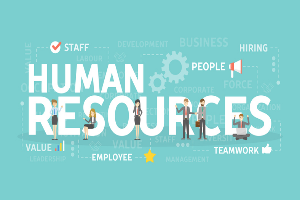
Nonprofit organizations form the backbone of societal change. You work tirelessly to advance your causes despite tight budget constraints. It’s crucial for your organization to implement cost-saving strategies that align with your goals and ethics. Through astute financial planning and strategic decision-making, your nonprofit can amplify its impact and extend the reach of its funding. Leveraging historical stability and pooled knowledge, such as entities like UST, your nonprofit can fortify its financial foundation amidst the ever-evolving economic landscape.
Below, we present ten actionable cost-saving strategies designed to support nonprofit leaders in their ongoing efforts to manage budgets more effectively and channel saved resources back into their mission-critical activities.
1. Streamline Operations Through Technology
In an era where digital transformation is vital, investing in technology can lead to considerable long-term savings. Automating mundane tasks reduces labor costs and increases efficiency, allowing staff to focus on more essential, mission-focused work.
2. Harness the Power of Volunteers
Volunteers are an invaluable asset to any organization. They not only bring passion and dedication, but also help save on personnel costs. However, manage volunteers responsibly to ensure their experiences are rewarding and further your cause.
3. Go Green to Save Green
Implementing eco-friendly practices goes beyond the moral benefits; it is also cost-effective. Cutting down on paper use, optimizing energy consumption, and recycling can lead to substantial savings.
4. Opt for Second-Hand Equipment
Before rushing to buy new equipment, consider purchasing quality second-hand items. Not only is this more economical and sustainable, but often you can find barely used resources at a fraction of the cost.
5. Leverage Free or Discounted Services for Nonprofits
Many companies offer discounted or even free services to nonprofits, including software subscriptions, marketing tools, and professional development resources. Take advantage of these opportunities.
6. Invest in Staff Development
While this may seem counterintuitive as a cost-saving measure, training your staff can actually reduce costs by improving efficiency and reducing turnover – both of which are costly in the long term.
7. Collaborate with Other Organizations
Forming alliances with similar nonprofits can lead to sharing of resources, joint grant applications, and mutual support, thereby reducing costs associated with events and projects.
8. Conduct Regular Financial Reviews
Assessing your financial practices regularly can help identify inefficiencies and areas for cost reduction. Keep abreast of financial management best practices and remain compliant with regulations.
9. Optimize Your Fundraising Practices
Ensure your fundraising efforts are as effective as possible by cutting unnecessary costs and using data-driven strategies. Tailor your campaigns to target the most engaged sectors of your donor base.
10. Reevaluate Your Space Needs
If remote work is sustainable, consider downsizing office space or renegotiating lease terms. This can be one of the most immediate ways to reduce fixed costs while maintaining productivity.
Taking these steps can contribute significantly to reducing expenses, but achieving optimum efficiency often requires tailored solutions. That’s where we can step in to assist you further. UST is well-versed in the unique challenges faced by nonprofit organizations and offers expert advice to help you save money, mitigate risk, and increase efficiency.
Don’t leave potential savings on the table. For a more detailed exploration of how these strategies can benefit your organization, and to discover additional, customized solutions for cost-savings, complete ourfree savings analysis. Fill out our free savings analysis form today and start charting a course towards financial sustainability for your nonprofit.
At UST, we’re committed to helping you make every dollar count, underscore your mission, and amplify the change you envision.

Question: What are the penalties and costs for misclassifying employees?
Answer: The answer will depend on a number of factors, such as how many employees are misclassified, how much extra money they would have been paid if properly classified, and whether or not lawyers or regulatory agencies get involved.
Generally, if an employee goes to the federal Department of Labor (DOL) and claims that they’ve been misclassified, the DOL will investigate. If the DOL determines that an employee—or entire group of employees—should have been paid overtime but wasn’t, the employee will be owed up to two years’ worth of unpaid wages (or up to three if the misclassification was “willful”). The organization may also owe the employee or employees liquidated damages equal to the amount of money owed. So, if an employee should have been paid $2,000 in overtime, the organization may owe them $4,000. The organization would also owe the government taxes on those wages, as well as interest on the taxes.
Most states also have their own minimum wage and overtime laws, and often an organization can be held liable under both federal and state law, meaning the employee would be owed additional damages for violations of state wage law. And if you are in a state with late payment penalties, the organization could owe additional damages for not having paid all wages by the time they were due. There’s also a very good chance that the organization will be held liable for attorney’s fees—both the organization’s and the employee’s.
On top of the costs mentioned above, there are potential federal civil penalties of $2,074 per violation (generally one penalty per misclassified employee), state penalties (which will vary), and in some cases the potential for jail time. Finally, statutory interest may immediately begin to accrue on the amount owed.
This Q&A does not constitute legal advice and does not address state or local law.
This Q&A was provided by Mineral, powering the UST HR Workplace. Have HR questions? Sign your nonprofit up for a FREE 60-day trial here. As a UST member, simply log into your Mineral portal to access live HR certified consultants, 300+ on-demand training courses, an extensive compliance library, and more.

Although nonprofits usually have exemptions from paying taxes, they must still file tax returns each year. Nonprofits file certain forms, depending on the type of nonprofit and the amount of annual revenue. Nonprofit organizations that maintain high levels of organization can find ways to save money and minimize complications in the tax-filing process. With this information, you will understand how to file taxes for a nonprofit.
Nonprofit tax returns involve a clear and honest accounting of the organization’s gross receipts and expenses for the year. Although nonprofits do not have to pay federal taxes and may be exempt from other kinds of taxes, the organization must demonstrate proper asset management and compliance with local and federal tax laws. These tips can help you manage your nonprofit tax obligations.
Nonprofits can only maintain a tax-exempt status through correct use of revenue. Organizations with a nonprofit classification include religious institutions, public safety organizations, charities, research organizations, and more. To preserve your tax-exempt status, you must prove that any revenue goes to other tax-exempt organizations, minus expenses.
To simplify the process of filing your nonprofit tax documents, you should aim to organize and maintain accurate records. The amount of detail that the IRS requires for nonprofit filing depends on annual revenue and type of nonprofit. Since you may need to provide exacting detail of all your expenses, you should ensure that you have those records at hand.
Nonprofits can deduct certain expenses needed to run the organization when balancing revenue and costs. Common deductions include:
If you are unsure of the deductions you may qualify to take, you should consult a professional for detailed advice.
In many cases, nonprofits are eligible for tax credits, as well. For example, if your nonprofit chooses to make certain clean energy upgrades to an office space, you may qualify to receive a credit for the expenses needed to complete the upgrades. Because nonprofits do not pay federal taxes, they can get the credit in the form of a direct pay reimbursement.
Many state and local governments offer additional incentives to nonprofits. Some states allow nonprofits to avoid paying sales tax, for example. If you qualify for these types of incentives and tax breaks, keep track of your records. Remember to file claims within the designated claim period, so you can minimize expenses.
Tax laws change every year. Part of learning how to file nonprofit taxes includes staying current on tax laws, so you understand your responsibilities, deductions, credits, and other opportunities. Before you start preparing your taxes, confirm that you are looking at the latest documents for the appropriate tax year.
Although eligible organizations do not pay income taxes, nonprofit payroll must still include payroll taxes, including Social Security and Medicare deductions. Since employee compensation can represent a significant portion of your deductions, you should confirm that you have followed proper procedures. If you struggle to manage these tasks, consider arranging for payroll services for nonprofits.
Failing to file taxes at the appropriate time can lead to penalties, including the possible loss of tax-exempt status in certain cases. Your nonprofit tax filing deadline depends on the tax calendar that your organization uses. Start preparation early, so that you have time to address issues before the filing deadline.
If you have all your files organized and ready for filing, you may find that the process takes less time than you expect. Plan to complete the following steps:
If you have questions or concerns about the information you must provide, you should consider hiring nonprofit tax help.
To avoid complication and confusion around filing your nonprofit taxes, you can call on UST for expert assistance. We specialize in solutions for nonprofits, including payroll management, tax document organization, and more. We can help you understand your tax filing status and get ready for tax season, in addition to offer our services for unemployment for nonprofit organizations. Contact us to learn more about our services or to request a free savings analysis.
SOURCES
https://labyrinthinc.com/how-to-prepare-a-nonprofit-tax-return/
https://donorbox.org/nonprofit-blog/nonprofit-tax-returns
https://www.irs.gov/charities-non-profits/exempt-organization-annual-filing-requirements-overview
https://www.investopedia.com/ask/answers/08/nonprofit-tax.asp
https://crscpa.com/blog/how-to-make-filing-taxes-for-a-nonprofit-easy-everything-you-need-to-know/
https://donorbox.org/nonprofit-blog/17-ways-to-save-money-as-a-nonprofit
https://www.freshbooks.com/hub/taxes/nonprofit-tax-deductions-for-501c3-organizations
https://www.cleanegroup.org/what-nonprofits-need-to-know-about-the-investment-tax-credit/

One area where costs can quickly add up is recruitment. Finding the right talent for your organization is vital, but it can also be a significant expense. Fortunately, there are ways to reduce recruitment costs without sacrificing the quality of your hires.
Refine Your Hiring Strategy
Developing a more strategic approach to recruitment can help you save money. Start by examining your current process and identifying areas where you can streamline. Consider using new technology to automate tasks such as resume screening and scheduling interviews. This can free up your HR team’s time and reduce the need for additional staff.
Utilize Social Media
Social media platforms such as LinkedIn, Twitter, and Facebook can be an effective way to reach potential candidates. By using targeted ads, you can reach a larger audience of job seekers without breaking the bank.
Leverage Your Network
Networking can be a powerful tool when it comes to recruitment. Reach out to current employees, board members, and volunteers for referrals. This can help you find qualified candidates who are already familiar with your organization and its mission.
Internship Programs
Internship programs can be a great way to evaluate potential employees before making a full-time offer. Interns can be sourced from local colleges and universities, and while they may require some training and supervision, they can help you find a great fit for your team. Additionally, internships can provide valuable experience and networking opportunities to students who may become future employees.
Attend Job Fairs
Attending job fairs can be a great way to connect with candidates who are actively seeking employment. Many job fairs are free to attend, and they provide a platform to showcase your organization and open positions.
By implementing these strategies, you can reduce your recruitment costs and still find the right candidate for your organization.
Another way that nonprofits can save money is by using UST HR Workplace. This platform offers live certified HR experts, over 350 employee training courses, an online employee handbook builder, job description tools and various other resources.
And the best part? Nonprofits can try UST HR Workplace for free with a 60-day trial. So why not see for yourself how UST can help you save money and streamline your HR processes? Sign up today and start reducing your recruitment costs!
Explore additional blogs here for money-saving tips and tricks.

Question: Can I limit the number of times an employee makes changes to their W-4?
Answer: No. IRS guidance states that an employee has the right to make changes to their Form W-4 as often as they would like, and you, as the employer, need to make those changes, even if they’re frequent. The only exceptions are if the Form W-4 is invalid or if you have been previously notified by the IRS that the employee is subject to an IRS “lock-in letter.”
If an employee gives you a revised Form W-4, the IRS states that you need to begin the new withholding no later than the start of the first pay period ending on or after the 30th day of receiving the new form. We recommend having a standard process for implementing any new Forms W-4 and ensuring your employees are aware of that process.
This Q&A does not constitute legal advice and does not address state or local law.
This Q&A was provided by Mineral, powering the UST HR Workplace. Have HR questions? Sign your nonprofit up for a FREE 60-day trial here. As a UST member, simply log into your Mineral portal to access live HR certified consultants, 300+ on-demand training courses, an extensive compliance library, and more.

Creating an employee handbook provides a cornerstone reference guide for an organization. It serves as a central source of information about policies, procedures, and the organization’s culture.
For nonprofits, especially, where resources can be limited and roles diverse, the importance of an employee handbook is immense. A well-crafted HR employee handbook is a tool that shows commitment to consistency, fairness, and transparency in a nonprofit organization.
Further, a comprehensive handbook can also serve as a critical tool in risk management when it clearly outlines policies related to discrimination, harassment, and disciplinary actions.
If your nonprofit needs some tips regarding how to create an employee manual, we can help.
Planning Your Nonprofit Employee Handbook
Working for a nonprofit, you understand the critical importance of creating a plan for any project. An employee handbook is a valuable piece of organizational content, making the planning stage instrumental in its composition and eventual success.
Here is some preliminary work you can do.
1. Identify Goals for the Handbook
Determine why your nonprofit needs a handbook and what you want it to achieve. Dig deeper than outlining policies and procedures. Consider how it can support your nonprofit’s mission, reflect your organizational culture, and serve as a resource for employee engagement, safety, and overall satisfaction.
2. Gather Input and Insights from Key Individuals
Consult with various stakeholders involved with your nonprofit, including:
Once you have gathered everyone’s insights, it can help identify the most relevant content areas and address specific concerns or needs.
3. Review and Understand Legal Requirements
Do your research or reach out to a legal professional to understand the legal framework associated with employment in your area, including federal, state, and local laws. This step is essential to ensure your handbook complies with all legal requirements and best practices for employment.
4. Decide on the Right Structure and Format
Understanding the handbook’s format will help you keep things organized. One important consideration is the delivery and consumption method, so decide whether you want to distribute it digitally, as a hard copy, or both.
7 Steps to Create an Effective Employee Manual
By understanding the importance of employee handbooks and with some preparation out of the way, you can officially start creating an employee handbook ready for use with these seven steps.
1. Outline Your Nonprofit’s Mission and Values: Begin with a clear statement of your organization’s mission and values to your respective community, as well as to your stakeholders and employees. This first, crucial step sets the tone for the handbook and aligns employees with your nonprofit’s goals.
2. Define Employment Policies: Clearly lay out policies regarding employment terms, work hours, telecommuting, leaves of absence, PTO, and other employment-related matters. Ensure these policies comply with local, state, and federal laws.
3. Detail Compensation and Benefits: Include information about salaries, benefits, such as health insurance, retirement plans, vacation policies, training and professional development opportunities, and eligibility criteria. Customize these sections to reflect the unique offerings available to all employees and managers when working for your nonprofit.
4. Establish Conduct Guidelines: Outline expected behaviors and standards of conduct to create and foster a positive work atmosphere. This section should cover everything from the dress code to ethics and confidentiality policies.
5. Explain Performance Evaluation Processes: Describe how and when performance evaluations will be conducted. It is also important to let employees know who will conduct the reviews, what they will cover, and what the remediation process looks like if required. This step helps employees understand the expectations and metrics against which they will be monitored, compared, and assessed.
6. Provide Procedures for Reporting Grievances and Complaints: It’s important for employees to know how to report issues or concerns. Clearly outline the steps they should take if they need to file a grievance or report misconduct.
7. Regularly Update the Handbook: Laws and organizational policies evolve, so it’s crucial to review and update your handbook regularly.
Employee Handbook Examples
Providing real, working examples of employee handbooks in the nonprofit space can be incredibly helpful. If you have a network of fellow leaders in the nonprofit sector, you may ask a peer if you can discuss their strategy or review their handbook.
Alternatively, since specific examples tailored to nonprofits may be harder to come by, looking at handbooks from a variety of sectors can offer inspiration and best practices.
Are You Ready to Create Your HR Employee Handbook?
We hope these tips will get you started, but you don’t have to plan, outline, and compose this important organizational asset on your own. Creating an employee handbook is a significant undertaking, so we encourage you to reach out to us for support.
At UST, we offer an extensive menu of nonprofit HR solutions for community-focused organizations that don’t have full-time, designated HR teams. Start with our reliable UST HR Workplace for guidance. Our professionals can help you prepare to craft your handbook, offering updated legal and regulatory information and overall best practices.
Explore the value of our services for yourself by signing up for our FREE 60-day trial, or contact us to discuss your nonprofit’s unique HR needs and Choose UST.
SOURCES
www.abelajlaw.com/non-profits/non-profit-employee-handbook/
No specific citation/allusion, but helpful: blog.airmason.com/employee-handbook-for-non-profit/

Running a nonprofit is the noblest example of a labor of love. The mission and vision are clear, the team driven by passion, and the pursuit of bettering the world is unflagging. However, in the midst of this impassioned journey, the need for structuring operations can sometimes be overshadowed. One of the pivotal yet often underestimated tools in the nonprofit’s arsenal is a well-crafted employee handbook—your statutory script that helps maintain order while supporting the organization’s growth and sustainability.
The Importance of an Employee Handbook
An employee handbook is the cornerstone of any professional organization. While the regulations governing nonprofits may vary, the need for clear and concise guidelines for employees doesn’t. Imagine your handbook as a detailed map of the terrain that marks out safe and sanctioned paths for your employees to traverse through their professional environment.
In the context of a nonprofit, where the spirit of the cause is integral, a handbook goes beyond a list of do’s and don’ts. It reflects your commitment to transparency, fairness, and nurturing a supportive work culture. It outlines your value system and empowers your team members with the knowledge necessary to align their actions with the organization’s broader goals.
Crafting Policies Tailored to Your Mission
Here, we delve into the art and science of handbook policy-making for nonprofits. The policies you establish and the language you use should mirror the unique essence of your nonprofit’s mission. For instance, if your nonprofit’s primary focus is environmental conservation, your handbook could include specific guidelines for eco-friendly practices at the workplace and during off-site events. Similarly, if your cause deals with vulnerable populations, your policies would need to highlight confidentiality and sensitive handling of information.
It’s not just about what you should include but also what you can exclude. As a nonprofit, your policies should be lean and mission-specific, steering clear of the bureaucratic verbosity often found in corporate manuals. Your intrinsic appeal lies in the directness and decisiveness with which you address matters, both operationally and ethically.
Understanding Charitable Compliance
For nonprofit policies, compliance is not just about what is obligatory under general labor laws but also about adherence to the specific clauses that ensure their charitable and tax-exempt status. Here, a thorough understanding of IRS guidelines and any state-specific laws is imperative. Your handbook should not just parrot legal jargon; it must integrate compliance with your organization’s spirit and mission, making the rules as impactful as possible.
Volunteer Inclusion and Engagement
Volunteers are the unsung heroes of the nonprofit world. Ensuring their inclusion in your handbook and understanding their legal standing is non-negotiable. Whether it’s guidelines for volunteer work, reimbursement policies, or recognition practices, a comprehensive handbook accounts for the unique role and importance of volunteers in organizational success.
Language That Leads
The language in your handbook is critical. It should be devoid of ambiguity, friendly but firm, and most importantly, it should inspire and guide. While there may be a temptation to formalize language due to legal stipulations, strive for a balance that never detracts from the heart of your mission and the human element it embodies.
Tailoring Your Tone
The voice of your handbook should echo your organization’s culture. If you’re an advocate for child welfare, the voice should be compassionate and assertive, reflecting the seriousness of the cause. If environmental sustainability is your banner, a tone laced with urgency and practicality can underscore policies on waste management.
The Clarity Imperative
Every word matters when it comes to a document as vital as your employee handbook. Use examples, case studies, and bullet points to break down complex or lengthy policies. Clarity ensures that your workforce understands not just the ‘what’ and ‘how’ of your policies but also the ‘why’.
Regular Updates to Reflect Your Evolution
Your nonprofit is not static, and neither are the policies that govern it. Any changes to your mission, legal requirements, or strategic direction must be swiftly echoed in your handbook. Regularly scheduled reviews should be a part of your nonprofit’s policy infrastructure to maintain relevance and currency.
Accessibility and Distribution Best Practices
An important yet underrated consideration is the distribution of your handbook. Ensure all employees and volunteers have easy access to the most current version. Whether through a digital platform or printed copies, accessibility ensures that your policies can be easily referenced and understood by all.
A nonprofit’s employee handbook is more than a compliance document; it’s a declaration of organizational philosophy and commitment. Crafting policies that resonate with the heart of your mission can amplify your work, solidify your team, and project a professional image to stakeholders and the public. Make your handbook an ally in your nonprofit’s journey—after all, even the noblest of causes deserve a blueprint for prosperity.
In today’s digital world, efficiency in HR management is not just beneficial; it’s crucial. UST understands the unique challenges that nonprofits face in managing human resources effectively. With HR Workplace, powered by Mineral, your team can build efficiency into HR workflows, ensure compliance to mitigate financial and reputational risks, and get empowered with resources that can do more for your employees.
With UST, you gain discounted access to Mineral’s smart employee handbook builder, alongside a wide array of HR and cost saving solutions for nonprofit employers. Mineral’s smart employee handbook builder is a game-changer for nonprofits, allowing you to build federal and multi-state compliant handbooks with ease. With features like Spanish translation and automatic updates, it keeps your policies not just comprehensive, but accessible and in line with the latest legal and HR best practices. Try our FREE 60-day HR Trial today!

Question: We recently made a couple of small updates to our employee handbook. Do we need to have employees sign a new handbook for each update?
Answer: No. For small, minor updates, you don’t need employees to sign off, especially if you simply made an administrative change like updating the name of your employee assistance program provider, correcting a typo, or adding a clarifying statement. A simple communication to all employees to let them know that the change has been made, why, and where to find the change should suffice as notice.
Larger changes, like a brand-new policy or an update with essential changes, would warrant a new employee signature, especially if they could be disciplined for violating the new or updated policy. If you need to discipline an employee related to the new policy or update, their signature will help show that they were made aware of the change.
This Q&A does not constitute legal advice and does not address state or local law.
This Q&A was provided by Mineral, powering the UST HR Workplace. Have HR questions? Sign your nonprofit up for a FREE 60-day trial here. As a UST member, simply log into your Mineral portal to access live HR certified consultants, 300+ on-demand training courses, an extensive compliance library, and more.

Professionals in the nonprofit sector are often more motivated by the mission over a high salary and interested in pursuing leadership roles that enable them to make a bigger impact towards their mission.
Many nonprofit executives and managers strive to understand how to improve leadership among their dedicated team members. Leadership in this context encompasses more than just guiding the organization towards its goals. It involves inspiring a team, cultivating a passionate and dedicated environment, and fostering a sense of shared purpose and camaraderie. It is important to remember that effective leadership goes beyond mere guidance; it involves creating an engaging and empowering atmosphere for everyone involved.
The challenges that nonprofits typically face, including limited resources, high community and peer expectations, and the need to maximize impact, require more and more unique effort from leaders. Nonprofit leadership requires individuals who possess a combination of strategic and resourceful capabilities, a deep connection to the organization’s mission, and an ability to embody its values.
While some of the necessary characteristics for leadership roles are organic to an individual, there is plenty that you can do to maximize natural talents by committing to nonprofit leadership training for your staff.
Please continue reading to discover how to identify potential leaders and how to develop a leader. With nonprofit executive leadership training, you can create a steady pipeline of caring and dutiful future managers and executives.
Tips for Improving Leadership Skills
Although some professionals are born with some natural leadership skills, they may need some guidance to hone and develop those skills to become a leader within your organization.
In this section, we delve into some practical and actionable tips for how to improve leadership. These steps are crucial for driving your organization forward with potential talent from among your existing and future team members.
1. Offer Broader Exposure to Your Organization’s Mission and Goals
As you strive to elevate and empower nonprofit employees to become leaders, they should understand as much about the nonprofit sector and your organization’s overarching mission as possible. They need to know more than their specific tasks within their department to see themselves moving up in your organization.
2. Provide Opportunities to Take on New Challenges
If you spot potential in an employee, help them develop their skills by providing a well-rounded perspective on daily challenges within your organization. Ask them to cross-train for roles in other departments to allow them to experience different roles and the accompanying challenges and rewards, of various positions.
3. Encourage Employees to Enhance Soft Skills
Soft skills are essential in nonprofit environments. As a leader, you likely find yourself using your communication, critical-thinking, problem-solving, time management, and teamwork skills daily. These skills are crucial to nonprofits operating with a limited budget and staff, which is not uncommon in this sector.
4. Assign Promising Employees Challenging Projects
When you identify potential leaders, it’s a good idea to offer them new opportunities that challenge them in different ways to see how they rise to overcome them and to continue sharpening their natural abilities.
5. Serve as a Support Source
Become a mentor to employees who show an interest in becoming a leader within your organization. Ask for insights and show trust and respect even when your decision differs from the employee’s preferred course of action.
6. Offer Training Opportunities
Whether your organization has the resources to create and offer a training program or if you decide to invest in one, some formal training can be beneficial. Well-structured and professional advice, guidance, and support can ensure effective learning and help track an employee’s progress.
How to Identify Potential Leaders
Often, identifying potential leaders begins with the hiring process. When you seek qualities such as passion for the nonprofit sector and your specific mission, as well as the above-noted soft skills and a desire to learn and grow, you need to nurture individuals, creating a steady pipeline of leadership talent.
At UST, we understand how challenging it is when trying to determine how to develop leadership skills in others, nurturing future leaders when you work with limited resources, including the on-hand staff to train top talent. We offer an expansive suite of nonprofit HR solutions for organizations that don’t have full-time HR departments, and can help you identify, train, and nurture talent to ensure you have a group of prepared and enthusiastic leaders.
Learn more about our services first-hand by signing up for our FREE 60-day trial, or contact us to discuss your nonprofit’s unique HR needs.
SOURCES
https://www.michaelpage.com/advice/management-advice/development-and-retention/how-develop-your-future-leaders
https://www.investopedia.com/terms/s/soft-skills.asp#:~:text=Soft%20skills%20can%20also%20be,carried%20over%20to%20any%20position.
https://www.cio.com/article/234848/6-leadership-qualities-to-look-for-when-hiring.html
https://www.indeed.com/career-advice/career-development/how-to-develop-leaders
https://www.qooper.io/blog/leadership-training-for-nurturing-a-future-leader
https://businessleadershiptoday.com/how-does-hr-help-leadership-development

When it comes to running a nonprofit organization, one of the most important aspects is creating a productive and safe workplace for your employees. Building a Human Resources department is an essential part of ensuring that your organization’s employees are equipped with the necessary resources, support, and guidance to succeed in their roles. In this blog, we’ll discuss the 5 top benefits of creating a Human Resources department and share how UST Workforce Solutions can help you achieve your HR goals.
1. Recruitment and Retention
One of the primary functions of the Human Resources department is to attract and retain top talent. A well-organized HR department can assist with the recruitment process by creating job descriptions, screening applications, and conducting interviews. UST HR Workplace can help your nonprofit organization streamline this process by providing job description tools, downloadable forms, and checklists, and provide access to HR experts.
2. Compliance and Risk Management
Compliance and risk management are critical aspects for any nonprofit organization, and a Human Resources department can help ensure that your organization is meeting all legal requirements and avoiding risks. UST HR Workplace offers a cloud-based HR platform that provides templates, trainings, and expert guidance to help nonprofits stay compliant with state and federal regulations.
3. Employee Training and Development
Nonprofit organizations rely heavily on the skills and expertise of their employees to achieve their mission. HR departments play a crucial role in identifying training needs and ensuring that employees have access to ongoing development opportunities. As part of our HR Workplace platform, you have access to over 300+ on-demand employee training courses, including topics on diversity and inclusion, harassment prevention, and leadership development.
4. Workforce Management
A Human Resources department helps manage the workforce by tracking employee attendance, performance, and compensation. With UST, nonprofits can access an online employee handbook builder and gain expertise on managing employee relations.
5. Strategic Planning
A well-organized HR department can help inform strategic planning by providing insights into trends, employee needs, and organizational strengths and weaknesses. With access to UST HR Workplace, nonprofits can leverage expert guidance to develop long-term plans that align with their mission and meet their workforce needs.
Overall, building a dedicated HR department can provide significant benefits for nonprofits. From ensuring compliance to attracting and retaining top talent to creating a positive workplace culture, human resources is a crucial element of nonprofit success. UST HR Workplace offers a FREE 60-day HR trial to help nonprofits see the benefits for themselves, so why not give it a try? Contact us today to learn more!

Question: Are there any questions we should avoid when interviewing job candidates?
Answer: Yes. You should avoid questions that cause an applicant to tell you about their inclusion in a protected class. Don’t ask about race, national origin, citizenship status, religious affiliation, disabilities, pregnancy, sexual orientation or gender identity, past illnesses (including use of sick leave or workers’ comp claims), age, genetic information, or military service. You should also avoid asking about things that might be protected by state law (e.g., marital status and political affiliation). If you were to ask any questions pertaining to these matters, rejected candidates could claim that your decision was based on their inclusion in these classes rather than their credentials.
The types of questions you ask a job candidate should be job-related and nondiscriminatory. This may seem obvious, but employers sometimes ask problematic questions because they believe they are job-related. For instance, an interviewer might ask an applicant if they have any back issues when they are trying to determine if the applicant can lift 25 pounds repeatedly throughout the day. Or when seeking someone to fill a position on Sundays, they might ask if the applicant is Christian or goes to church. Both of these questions are plainly discriminatory and could get an employer into significant trouble.
Thankfully, there’s a way to get this information without asking discriminatory questions. Instead of considering the things that could get in the way of an applicant doing the job and asking about those, frame the question so that it’s about the essential duties of the position. Can they lift 25 pounds all day every day? Are they available on Sunday since that’s the day you are hiring for? Simple adjustments and precautions can go a long way toward a compliant interview process.
On a final note, you should also avoid questions that are asked purely out of curiosity (Do you have children? What kind of accent is that? What do you do for fun?), as those can easily be misconstrued as discriminatory. When in doubt, return to the job description. Make sure your questions are directly related to the essential duties and answer the ultimate question—can the applicant do the job?
This Q&A was provided by Mineral, powering the UST HR Workplace. Have HR questions? Sign your nonprofit up for a FREE 60-day trial here. As a UST member, simply log into your Mineral portal to access live HR certified consultants, 300+ on-demand training courses, an extensive compliance library, and more.

Nonprofit organizations improve communities by providing impactful services, including everything from educating, sheltering, healing, nurturing and so much more. Nearly everyone in the United States has benefited from a nonprofit organization in one way or another. The roughly 1.3 million nonprofit organizations in the U.S. need assistance to operate and help as many people as possible.
Internship programs offer numerous benefits to nonprofit organizations. Interns provide much-needed assistance, unique skill sets and fresh ideas. Internships can also lead to new hires that help the organization operate and grow for years to come. Even interns who do not become full-time employees often remain proponents of the organization.
There’s no denying that nonprofit internships are valuable, but finding the right interns can be a challenge. Discover how you can recruit and hire interns who will have a positive impact on your organization through their hard work and unique skills:
Where to Locate Your Nonprofit Interns
Nonprofit internships offer many benefits to the organization, as well as to the interns themselves. However, locating the right recruits may feel like finding a needle in a haystack at times. The following are several places to find quality recruits, so you can spend less time searching and more time offering your much-needed services.
College Career Offices
College students make excellent interns, as they’re often eager to learn about the industry they study. University career centers often have partnerships with businesses and nonprofit organizations and counselors can connect interested students with your nonprofit. This option often results in quality interns, as the students enter the career office seeking such opportunities.
Online Platforms
Online job listings are becoming some of the most popular places for potential interns and employees to find work. Sites such as SimplyHired and Indeed[BM1] allow you to post your internship opportunity and review candidates online. Many online job platforms offer special rates or free listings to registered nonprofits.
Social Media
A strong social media presence is essential to the success of a nonprofit organization. It’s also one of the best ways to reach Gen Z, millennials, and older demographics. Use Instagram, Facebook, TikTok and other social media outlets to launch campaigns and sponsored posts advertising your nonprofit organization internships.
Word of Mouth
Word of mouth is one of the easiest and most effective ways to get the news out about your available nonprofit organization internships. Let current employees and your community know about available opportunities. Your organization’s positive reputation will help the word travel fast. Someone on your current team may already have a friend or acquaintance in mind.
6 Tips for Hiring Interns
How you hire interns can have a significant impact on their experience at your nonprofit organization. The following are a few effective tips to help ensure your potential interns understand what the position entails and how the internship can be mutually beneficial.
1. Explain the Internship Requirements Thoroughly
A key factor in finding the right interns and better ensuring they meet your expectations is being transparent. Interns should fully understand the responsibilities of the position, their expected schedule, and how you’ll measure their performance.
Many interns are juggling internships with school and or jobs. It’s important for them and the organization to know if the role is something they can handle. Now is also the time to explain what an ideal candidate looks like and the specific skills and characteristics you expect the intern to have.
2. Establish a Consistent Screening Process
A screening process narrows your list of potential candidates which helps you avoid hiring individuals who do not fit your organization’s needs. Your screening process may include the following methods and any others that are more specific to your nonprofit.
3. Ensure Each Intern Has a Supervisor
Interns are typically seeking work experience or looking to fulfill requirements for a specific qualification. Assigning a supervisor to new interns throughout the hiring process and beyond will help ensure they understand their responsibilities. The supervisor is also the first person an intern can consult with questions or concerns.
4. Emphasize the Organization’s Impact
Individuals seeking nonprofit internships are often looking for meaningful work that has a positive societal impact. Ensure that potential interns understand the cause the organization supports, how they’re increasing awareness, and how the intern’s position will help the organization achieve its goals.
5. Reflect and Offer Feedback Often
Interns are often eager to learn and advance in their careers. Establish time for interns to discuss the position and their experience as new recruits with their supervisors. While this may include reflecting on their goals or feelings about the organization, it’s also a time for interns to provide feedback.
Nonprofit internships are designed to benefit the intern and the organization. Interns can offer valuable insight into the pros and cons of the organization’s operations, scheduling demands, the recruitment process and more.
6. Remain Adaptive
Being able to adapt is essential to an organization’s success. Remember that not all interns will become full-time employees and that your internship program may change as your organization grows or develops.
Keep an open mind when assessing potential interns, as some may prove to be greater assets than their resumes can express. An intern you thought was an ideal hire may not work out, while a less-qualified intern exceeds your expectations.
UST offers virtual HR solutions for organizations that don’t have full-time HR departments. We provide a complete range of HR resources to resolve HR issues quickly and smoothly. Our solutions support the unique needs of nonprofits, so you can stop worrying about HR concerns and focus on extending your organization’s positive impact.
For more insight into human resource best practices for nonprofits, join our newsletter.
Sources:
https://www.chooseust.org/ust-hr-workplace
https://www.chooseust.org/solutions-overview
https://www.volgistics.com/blog/how-to-recruit-nonprofit-interns/
https://www.wholewhale.com/tips/where-to-look-for-nonprofit-interns/
https://www.councilofnonprofits.org/about-americas-nonprofits/nonprofit-impact-communities

Our world continues to progress and it has become increasingly important for organizations to prioritize Diversity, Equity, and Inclusion (DEI) awareness. Nonprofits, in particular, have a unique opportunity to lead the way in this area, as they are often centered around causes that directly impact marginalized communities. Furthermore, they also play an integral role in shaping society by addressing various social issues. As a nonprofit leader, you have a pivotal role in fostering a culture of DEI awareness within your organization. In this blog, we will explore actionable strategies that nonprofits can implement to cultivate and uphold a vibrant culture of DEI awareness.
Let’s dive in!
Train and Educate Your Staff and Board Members
Training and educating staff and board members are practical measures nonprofits can take to develop a culture of DEI awareness. Staff and board members who understand DEI concepts and issues like unconscious bias, microaggressions, and systemic racism can contribute to charting ways towards a more inclusive and equitable culture.
Include DEI in Organizational Policies
Inclusion of DEI practices in the organization’s employee handbook is another way to promote and foster a culture of awareness. The policies developed for your organization should state the organization’s commitment to DEI and create accountability provisions. This sends a message to employees, board members, and stakeholders of the importance placed on cultivating an inclusive workplace.
Encourage Employee Resource Groups
Employee Resource Groups (ERGs) provide an opportunity for employees to come together, share ideas, and connect with colleagues around shared interests or identities. This platform can help employees feel more seen and heard in the workplace, improving employee engagement and retention rates.
Foster Inclusivity in Recruiting and Hiring Process
Another way to build a DEI-oriented culture is by ensuring recruiting and hiring processes are also inclusive. The organization should examine its recruiting/hiring process and assess how it screens new applicants. It’s valuable to select candidates based on qualifications, and not based on appearance, background, or cultural fit. Diversity of thought helps drive your strategy, brings new ideas, and overall benefits your organization. Offering opportunities and a welcoming environment to underrepresented groups in society can help cultivate a culture of inclusivity.
Regularly Measure and Evaluate DEI Metrics
Evaluation and accountability are critical when developing a culture of DEI awareness. Nonprofits should set goals that measure their progress towards creating an inclusive culture, and these goals should be reviewed and reported the same way as financial performance. Regular evaluation and metrics help nonprofits to identify areas of success and shortcomings, thereby leading to areas of opportunity.
As a nonprofit leader, creating a culture of DEI awareness is an essential step for any nonprofit organization striving to be a top performer in fulfilling its mission. Nonprofits can foster a culture that embraces diversity, equity, and inclusion by implementing key strategies. These include educating employees, enhancing organizational policies, fostering inclusive hiring practices, encouraging employee resource groups (ERGs), and measuring DEI metrics. This approach not only improves engagement, but also fosters an inclusive and collaborative environment. Overall, this collective effort will elevate the impact and sustainability of the nonprofit’s mission.
Raising awareness and sparking conversations around DEI concepts, historical context, and current issues relevant to your cause is crucial. Consider hosting workshops or training sessions facilitated by outside experts who can provide valuable perspectives and create a safe space for these necessary conversations.
At UST, we understand the challenges faced by nonprofit leaders in terms of time and budget constraints. That’s why UST HR Workplace is here to help streamline the support your HR needs. Sign up today for a free 60-day trial and gain access to our live HR certified consultants, a library of 300+ on-demand training courses, and a comprehensive compliance library. We are here to empower you with the tools and training necessary to cultivate an inclusive and supportive environment.

Question: We’ve transitioned to a remote-first workforce. How can we keep our employees and managers engaged with video meetings and messaging apps—especially those employees that are missing the social aspects of working together physically?
Answer: Even with video conferencing and messaging apps, fully involving remote employees in team and company meetings remains a challenge. There may be no replacing the experience of being physically in the room, but you can take steps to make these meetings more productive and inclusive.
The most important thing to remember when “meeting” with remote employees is that you can’t conduct the meeting in the same way as you normally do when everyone is physically present. You have to find a way to replace the advantages that close proximity has, especially the ease of reading body language and picking up social cues. These, unfortunately, do not translate well over the screen or the phone. So, what can you do?
What remote employees need to fully participate in meetings is space and time to speak. You can provide this space and time in a few ways. First, if there are some physically present participants, ask them to pause for a second before jumping into the conversation. This gives remote employees time to get a word in, plus it helps counter any time delays caused by the conferencing technology. Second, whoever is leading the meeting should regularly invite remote employees to add anything if they have something to say, preferably before moving on in the agenda. Third, when possible, have a remote employee lead the meeting or a section on the agenda. This focuses attention on the remote speakers and can help remind everyone that the meeting isn’t just happening in the physical room. Finally, if a group of remote employees are located in the same workspace, occasionally setting their site as the physical meeting space can help your non-remote employees get a feel for the challenges of being remote during a meeting.
Some preliminary work before the meeting can also help make the meeting itself more efficient. First, test any systems ahead of time so that they’re working for everyone when the meeting starts. Second, email the agenda out so everyone knows what to expect. Third, assign someone in the meeting room to be the contact person that remote employees can email or message if they have questions, concerns, or issues.
After the meeting, check in with any remote employees and ask them to be candid about their experience. What worked well and what could be improved? See what you can do to accommodate them in the next meeting.
You may not be able to fully replicate the experience of physically being in the room, but taking these steps can enable remote employees to feel more involved and make the meeting itself run more smoothly.
This Q&A was provided by Mineral, powering the UST HR Workplace. Have HR questions? Sign your nonprofit up for a FREE 60-day trial here. As a UST member, simply log into your Mineral portal to access live HR certified consultants, 300+ on-demand training courses, an extensive compliance library, and more.

Nonprofit Burnout
Did you know that nearly a quarter of U.S. workers experience burnout? Nonprofit burnout numbers are even higher, with 50% of nonprofits experiencing high burnout levels.
The impact of burnout can lead to low employee morale and high turnover rates for nonprofit employees. Without identifying burnout and helping nonprofit employees manage it, your employees may decide to leave, or may have trouble accomplishing everyday tasks. These conditions could lead to limited results for the community your organization intends to serve.
Have you noticed burnout symptoms among your nonprofit employees and volunteers? Do you know the symptoms?
In this blog post, we’ll answer these questions and discuss what you can do to preserve good work- life balance, while prioritizing mental health and well-being to prevent nonprofit burnout.
What Is Nonprofit Burnout?
Burnout is a phenomenon that has become all too common in the workplace. It is typically the result of chronic workplace stress without proper attention and management.
There isn’t necessarily a medical diagnosis for this condition, but it is a mental health concern that can lead to deceased physical and mental health when it goes without recognition and correction.
Your employees likely love what they do for your nonprofit organization, but that doesn’t mean they are immune to the effects of prolonged stress that frequently leads to burnout.
While nonprofit work is meaningful and rewarding, it can also become emotionally draining for nonprofit staff due to the sense of urgency to improve the community. It isn’t unusual for nonprofit team members to work to the point of overworking themselves, and neglect self-care and their own mental well-being.
What Does Employee Nonprofit Burnout Look Like?
You probably know when you are asking more of your nonprofit employees. However, you may not be able to detect precisely when they are taking their duties and efforts beyond reasonable limits. Nonprofit burnout typically happens when employees are overloaded with work for a long period of time or lack adequate resources and time to do the necessary tasks.
If you know how to identify burnout among your nonprofit workers, it’s the first step in helping them.
As a nonprofit leader, note that these characteristics include:
6 Tips to Prevent Nonprofit Burnout
Fortunately, there are ways to help your valued nonprofit employees avoid or recover from nonprofit burnout.
1. Create a Checklist of Nonprofit Burnout Indicators
Detecting signs of burnout is a crucial first step in preventing or halting this damaging condition. You can start by using the above-noted characteristics of burnout to better ensure you notice the signals as early as possible.
2. Connect with Your Nonprofit Team Members Regularly
Whether your team members work on-site or in a remote or hybrid model, conduct regular meetings in-person or via a video conference platform. Ask your team members how things are going to make sure everyone’s has a balanced workload.
Let everyone know that you want them to speak up if they feel overwhelmed, and that you want to find a way to offer support if they do. It is also important to ask your nonprofit team members to offer support to one another when possible.
3. Promote Work-Life Balance
No matter how important your nonprofit’s mission, your employees’ health is vital. If they can’t work effectively, your nonprofit and the community you serve will suffer. Model healthy workplace behaviors that focus on work-life balance. Encourage employees to practice and prioritize self-care and setting boundaries.
4. Establish and Foster a Healthy Workplace Culture
Much of what we propose serves as establishing a good workplace culture, but there are some intentional steps to accomplish this, including the following:
5. Address Changes in Attitude and Behavior Among Employees
With the list of indicators in mind, if you detect drastic changes in a nonprofit employee’s attitude or behavior, it’s best to address this as soon as possible. Take a gentle approach and start by sending an email asking if everything is OK.
If you don’t find this strategy helpful, ask the employee to join you for a private meeting in your office. Let him or her know that it is OK to discuss problems, concerns and stressors — and that you are there to serve as support.
6. Remind and Encourage Employees to Take Time Off
It’s important for employees to use their PTO to maintain good mental, physical and emotional health — especially when working hard in the nonprofit sector. Many workers find it easy to skip days off to finish a project, but the potential for stress and burnout are too great. Remind employees that their project will be ready for them when they return and that, if necessary, other employees can help.
We hope you can help your dedicated employees avoid nonprofit burnout with these ideas. If you need more help, UST offers many solutions that help identify issues in your nonprofit organization.
Contact us if you need additional help to reduce nonprofit unemployment and HR liability.
Sources
https://www.mckinsey.com/mhi/our-insights/addressing-employee-burnout-are-you-solving-the-right-problem
https://www.goodera.com/blog/coping-with-nonprofit-burnout
https://www.urban.org/urban-wire/addressing-burnout-critical-social-sectors-success
https://nonprofitquarterly.org/avoiding-burnout-and-preserving-movement-leadership/
https://www.thehortongroup.com/resources/11-tips-for-nonprofits-to-prevent-employee-burnout/
https://www.funraise.org/blog/mental-health-matters-when-the-goalposts-are-always-moving-nonprofit-burnout-is-a-given

As a leader of a nonprofit organization, it is imperative to ensure that your clients are getting the customer service they desire. Even with a well-trained and dependable staff, unforeseen circumstances can arise, leading to your staff having to effectively de-escalate situations with irate or upset clients. By training your employees in these de-escalation techniques, you can create a more relaxed atmosphere and facilitate productive communication, ultimately leading to better outcomes for both parties involved.
Here are some useful tips that employees of nonprofits can use to de-escalate situations with upset clients:
1. Listen attentively and remain calm: The first step to diffusing a situation is to listen intently to the concerned party and remain calm. Avoid getting defensive or argumentative, as this will only worsen the situation.
2. Show empathy and understanding: It’s vital to acknowledge the client’s grievances and show that you understand their frustrations. Use statements such as “I appreciate your concerns” or “I can understand how you feel” to let them know that you’re listening.
3. Clarify the problem: Once you’ve listened to the client’s perspective, clarify the issue to ensure you understand the situation clearly. To do this, repeat what the client has said in your own words or ask a question to clarify any doubts.
4. Offer a solution: Once you understand the problem, offer potential solutions that could help resolve the issue. Ensure the solution is realistic, actionable, and in the best interest of the client.
5. Apologize if necessary: If a mistake has been made, sincerely apologize sincerely and take responsibility for the error. Use the apology as an opportunity to rebuild trust with the client.
Nonprofit leaders play a crucial role in managing challenging situations with upset clients. Successfully navigating these scenarios and building trust in your organization can be achieved through the implementation of effective de-escalation techniques. It is important to actively listen to their concerns, demonstrate empathy, clarify any issues, propose practical solutions, and take responsibility if necessary. By following these straightforward steps, your nonprofit can consistently deliver exceptional service, defuse tense situations, and positively impact your organization’s ratings. Demonstrating exceptional customer service with consistent earning 5-star ratings can help to enhance your reputation and further the mission of your nonprofit organization.
Furthermore, investing in the development of your staff through effective training programs is essential. By ensuring that your team has the necessary knowledge and tools to handle demanding customer interactions, you can foster improved client relationships and create a happier and more efficient workforce.
UST HR Workplace is here to make it easier for nonprofits to get the support they need. Sign up now for a free 60-day trial and enjoy access to our live HR certified consultants, 300+ on-demand training courses and an extensive compliance library with UST membership. Enjoy the beneficial insights and various resources that help empower you with the right tools and training to take better care of your team while keeping your clients contented. Act fast – join now and watch your nonprofit thrive!

Question: How should employee files be organized?
Answer: We recommend having five separate files for each employee, as outlined below:
These files should be kept in a secure location that is only accessible to those in the HR function or with a legitimate need to review the information—for instance, in locked cabinets inside a locked HR office. This information can be stored electronically if that makes more sense for your business. Just ensure that it’s well secured and backed up to prevent data loss.
There are specific requirements for storing I-9s electronically, which are probably good standards for any kind of electronic data storage.
This Q&A was provided by Mineral, powering the UST HR Workplace. Have HR questions? Sign your nonprofit up for a FREE 60-day trial here. As a UST member, simply log into your Mineral portal to access live HR certified consultants, 300+ on-demand training courses, an extensive compliance library, and more.

A well-designed onboarding plan is more than a perfunctory welcome packet with endless bureaucratic documents and a brief meet and greet from days gone by. It provides your nonprofit hiring team and the respective department manager an opportunity to fully integrate new hires into your organization.
Why Does Employee Onboarding for Nonprofits Matter?
An onboarding plan for new hires gives you a window — designated by your leadership and HR teams — to provide an in-depth cultural and productivity-based primer. It serves as a prolonged orientation that focuses on ensuring new employees have all the tools, they need to successfully complete daily tasks.
It’s equally important that new team members feel welcome and included by their peers and managers. Onboarding plans can help with this since they are generally designed with equity, diversity, and fairness in mind.
This focus aids in fostering a much-needed and desirable team-oriented environment. It helps individuals learn, acclimate, engage, improve, and thrive. A robust onboarding strategy helps ensure that everyone works together to fulfill your organization’s mission according to its values.
The Definition of an Employee Onboarding Process for Nonprofit Organizations
With helpful resources from trusted sources and partners, along with the following tips, you can create a highly effective onboarding program and get the results you want for your nonprofit organization and your valued employees.
Duration — Think Long Term
Onboarding is best when viewed as a long-range strategy. It isn’t a one-off event that takes one day. Instead, think of it as a continuous process that focuses on the employee’s long-term integration within the organization.
Think of timelines such as our 30-60-90-day plan that sets nonprofit employees up for short-term and long-term success that leads to powerful employee retention.
Mapping out a plan for a new hire’s crucial first three months can be instrumental. It provides structure, sets expectations, and ensures that both the organization and employee are aligned in their objectives and expectations.
Create a Nonprofit Employee Onboarding Checklist
Planning and organizing a long-range onboarding process will help ensure you don’t miss anything you want to include. This is true for any business, but for nonprofits, where mission and purpose are at the forefront, it’s vital to create an experience that aligns new employees with the organization’s unique vision and goals from day one.
Here is a sample checklist to ensure that your nonprofit’s onboarding process is comprehensive and effective:
Adaptability and future growth should be at the core, ensuring that the process remains relevant and effective as organizational needs evolve.
Rely on Technology to Streamline the Process
Besides sending out emails and productivity app messages before employees arrive the first day, you can lean on even more technological tools. For example, you can record complex training modules for processes you understand are challenging. This allows new hires to watch your in-depth video as many times as needed to understand a particular job task or operation.
Create an Employee Handbook
A thoughtful and comprehensive handbook communicates rules and policies. It also instills a sense of the organization’s culture, mission, and values. Best of all, it serves as an easily accessible, consistent, and constant companion which is essential for helping new hires navigate their initial days with greater confidence.
Designate a Work Partner or Buddy
Assigning a new hire to an existing employee to act as their work buddy helps to quickly instill and foster a sense of belonging. It’s no secret that starting a new job can be overwhelming in terms of the work itself and relationship-building. This step is your personal touch offering employees a go-to person for information, someone to answer their questions while acclimate to and align them with your mission, and their place in your organization.
Make Personal Introductions for Quick Connections and Long-Term Collaboration
Help new hires get to know as many of their colleagues as possible in the onboarding process. When you take the intentional time and energy to introduce new hires to team members and leadership, it helps to establish immediate connections, encouraging an open and collaborative work environment.
Set Clear Goals
Clear goals provide direction and purpose for your new hires to aspire to. Ensure that goals are aligned with the organizational objectives and tailored to the employee’s role, promoting a sense of accomplishment and belonging.
Establish a Mutual Feedback Loop
Regular constructive feedback reinforces positive behavior and identifies areas for improvement. It’s also a good time to discuss what the employee is doing right and how much you appreciate their efforts. However, feedback should be a two-way conversation, ensuring new hires feel heard and valued. Let them know that their constructive feedback is welcome and helpful to your managers and the organization.
Are You Ready to Launch Your Nonprofit Employee Onboarding Program?
If you are ready to develop, launch, or improve your nonprofit employee onboarding plan, UST stands as a beacon for nonprofit organizations. We offer solutions that simplify your operations so you and your team can focus on your mission.
Contact us here to learn more about our nonprofit onboarding strategies and support.
SOURCES

The Importance of Mental Health in the Nonprofit Workplace
Mental health is an often overlooked but critically important aspect of workplace wellbeing. Nonprofit organizations are especially susceptible because they are tackling some of the world’s most pressing issues. Organizations prioritizing employee mental health can anticipate improved employee engagement, greater satisfaction, and stronger outcomes. A psychologically safe workplace lays the foundation for such achievements. Statistics reveal that one in six individuals experience mental health issues at work, resulting in the loss of twelve billion workdays annually due to depression and anxiety. Additionally, happy employees are shown to be 13% more productive, according to an article by Spill.
The first step to creating a psychologically safe workplace is to understand what it is, and what it is not. A psychologically safe workplace is one where employees feel comfortable, respected, and valued. It is a place where they can express themselves without fear of ridicule, judgment, or discrimination. It is also a workplace where employees can voice their concerns without being punished, and where constructive criticism is encouraged. A psychologically safe workplace is not a place where employees fear retribution for speaking out, where bullying is tolerated, or where mental health concerns are stigmatized.
Creating a Psychologically Safe Environment
To create a psychologically safe workplace, within a nonprofit organization, leaders and managers must prioritize their employees’ mental health and wellbeing. Employees of nonprofit organization often work long hours, and care deeply about the impact they are making. This emotional toll on employees can lead to burnout. By means providing access to mental health resources, including counseling and therapy services, promoting work-life balance, and encouraging self-care, you can help mitigate employee stress. It also means creating clear and fair policies regarding performance evaluation, promotion, and disciplinary action. This way, employees can feel assured that they are being evaluated based on their performance and skills, rather than personal biases or factors outside their control.
Training and education are also crucial to creating a psychologically safe workplace. Leaders and managers should educate themselves on mental health wellness strategies and best practices for supporting employees in this area. They should also provide training to their staff on recognizing and responding to mental health concerns, as well as promoting mental health awareness and reducing stigma. If you want to continue your educational journey, UST’s HR and Compliance partner, Mineral, has a variety of educational resources to help get you started. Read Mineral’s blog, How Employers Can Address Mental Health in the Workplace, by clicking here.
Getting a psychologically safe nonprofit workplace requires continuous dedication, effort, and resources. However, the advantages of a safe and positive work environment for both employees and organizations are worthwhile. By prioritizing mental health and wellbeing, implementing clear policies, and offering resources, nonprofit leaders and managers can establish a supportive, respectful, and inclusive workplace culture for all employees.
Find more resources to navigate your nonprofit’s workplace with UST’s blogs.
Source: https://www.spill.chat/mental-health-statistics/workplace-mental-health-statistics

Question: We have two employees who don’t seem to like each other, and it is starting to affect their work. How do we help employees who don’t get along to work well together?
Answer: Getting employees who don’t like each other to work well together can be challenging, but here are several steps you can take to improve the situation:
This Q&A was provided by Mineral, powering the UST HR Workplace. Have HR questions? Sign your nonprofit up for a FREE 60-day trial here. As a UST member, simply log into your Mineral portal to access live HR certified consultants, 300+ on-demand training courses, an extensive compliance library, and more.

An engaging communication strategy is vital for any business, regardless of the size of the organization or whether it is in the private or nonprofit sector. Good communications enable you to share and clarify your organization’s message, boost visibility and awareness, and generate engagement and support. This key element is involved in every charitable campaign, project, or event, so you need to develop a nonprofit communication strategy your organization can count on.
In this blog post, we’ll share some insights about communication strategies for nonprofits and how you can develop one that gets results for your mission.
What is a Nonprofit Communication Strategy?
A communication strategy for nonprofit organizations is an intentional, custom framework that allows for seamless communication with donors, media, beneficiaries, volunteers, stakeholders, and the public. It’s more than a messaging system or a way to distribute the latest information; a strong communications strategy serves as a roadmap for creating, delivering and managing consistent and meaningful messages with impact—supporting the organization’s goals and mission.
Why is an Efficient Nonprofit Communication Strategy an Important Organizational Task?
We touched on some reasons that a communication plan is vital for nonprofits, such as communicating a clear and consistent message, boosting visibility and awareness, and facilitating engagement.
Here are some additional reasons to help you understand why a communication strategy is essential.
5 Steps to Create an Effective Nonprofit Communications Strategy
A high-performing nonprofit communication plan answers the core questions: What? When? Who? Where? How?
We’ve come up with five steps to create an effective nonprofit communication strategy to gain all the benefits needed to run a successful nonprofit company or fundraising event, using the basic questions to guide your nonprofit toward success.
1. Set Goals and Objectives (What?)
Essentially, what do you want your communication strategy to do? There are many different types of goals you might choose. A perennial favorite set of goals are Specific, Measurable, Achievable, Resourced and Time-Bound (SMART), which help point you toward the broad outcomes you want to achieve through your communications — but any set of goals that helps you do that will work.
Consider establishing goals such as seeking fundraising from corporate donors, building branding and awareness, and engaging your local community.
Your objectives should always reflect the ways in which you and your team are working on the goals you want to reach for optimal transparency and trust-building.
2. Establish a Timeline and Frequency (When?)
It’s important to determine the overarching timeline for sending out communications from your nonprofit. It’s just as important to determine how much communication your audience wants — you don’t want to flood someone’s inbox, turning him or her off from your messaging completely.
Further, the frequency is different for diverse types of communication. For example, you might publish one or two blog posts per week, several social media post each week and send out one email daily. If you have a fast-approaching event, you might increase the communication frequency for your most effective channels.
3. Know Your Audience (Who?)
Knowing your audience, speaking to them directly, and providing them meaningful information are essential ways to drive engagement with the right donors and stakeholders. For instance, do you want to gain new donors or update long-term existing donors? If you want to send regular emails or newsletters, either separate the different donors manually or find the right donor data segmentation support to make it easier.
4. Clarify Your Message and Create Content with Integrity and Transparency (Where?)
Clarify your brand and message, ensuring it is simple, consistent, and easily understood. Focus on the high-level point you want to make each time, such as your mission, why you need financial support and the donor’s impact. By sharing these things, you are providing effective storytelling, which frequently resonates with donors. You will build trust, transparency and honesty in your messaging that inspires people to support your organization and keep coming back.
Share your messages through the channels listed above and others, including blog posts, social media posts, print media, television advertising, and radio commercials when applicable.
5. Evaluate Your Strategy (How?)
It’s important to regularly check to see how your nonprofit’s communications strategy is doing. At a minimum, take the time and effort to evaluate your strategy and planning process on a monthly basis. Review your past work to see how effective it was, using key performance indicators (KPIs) and choosing the best metrics to determine whether you are on track to meet your communication goals.
Here are some KPIs to consider in your evaluation process:
Summing Up
An effective communications strategy will allow your nonprofit organization to reach your audience and create meaningful engagement that satisfies donors, stakeholders, and beneficiaries. Our UST HR Workplace can help you develop, launch and maintain a powerful communications strategy wherein you foster connection through targeted outreach and helpful, timely information and prompts for action.
Contact us to learn more about how we can help you serve your population.
Sources
https://www.networkforgood.com/resource/top-10-reasons-for-creating-a-communications-plan/
https://afpglobal.org/introduction-donor-data-segmentation?gclid=Cj0KCQjwi7GnBhDXARIsAFLvH4lx3Yi9Sgx1Gsu3xA3LhGM3k_Kh1vPC6ERjW8xZcLk6qHugFYiz4lEaAogtEALw_wcB

Running a nonprofit organization requires a tremendous amount of teamwork and collaboration. In today’s digital age, many nonprofits have adapted to remote work models to be more efficient, cost-effective, and flexible. However, when it comes to remote collaboration, challenges such as communication barriers, cultural differences, and time zone disparities can make it difficult to maintain effective collaboration across your workforce.
In this blog, we’ll share effective strategies that can help you enhance remote collaboration throughout your nonprofit organization.
Invest in the Right Collaboration Tools
Your organization needs the right tools to help improve collaboration among remote teams. Some essential tools that can help include cloud-based document sharing platforms like Google Docs and Dropbox, video-conferencing apps like Zoom and Skype, chat and messaging apps like Slack, and project management tools like Trello and Asana.
Establish Clear Guidelines for Effective Communication
Communication is the lifeblood of collaboration. To ensure effective collaboration, it’s important to establish clear communication guidelines and protocols that apply to all members of your organization. These guidelines should include standards for language, tone, response times, and how to handle disagreements.
Foster a Culture of Open Communication
Remote collaboration requires a more inclusive and transparent communication approach. Encourage your team members to be more open and transparent in their communication while ensuring that they are effectively listened to and their opinions noted. This will ensure that every member of your team has an equal chance to share their ideas, which will ultimately lead to more effective collaboration.
Develop Work-Collaboration Schedules
As remote teams can be scattered around the world, it’s essential to have defined collaboration schedules to ensure that all members of the team can contribute. Work-collaboration schedules can cover topics such as project meetings, deadlines, shared work times, etc.
Train your Team in Virtual Collaboration Skills
Provide training and workshops to your team, informing them on best practices in virtual collaboration skills relevant to your workforce. Proper training and education in virtual communication, project management, and teamwork will create well-rounded staff who are more effective in a virtual work environment.
It’s essential to embrace and encourage a healthy culture of remote collaboration. By providing your team with the resources for safe and productive collaboration, you’re helping foster an environment of creativity, connectedness, and efficiency. With the right tools in place, you won’t have to compromise on quality or efficiency as people work from wherever they are most comfortable and productive. A strong foundation made up of communication, trust, transparency, and open-mindedness can help take your nonprofit to another level. Your employees will feel empowered knowing that their work matters and that they are part of an organization with core values that enable greater collaboration across your remote workforce. Don’t hesitate to invest in the tools necessary to support remote collaboration – it could be the keystone for your nonprofit’s success.
Find more resources to help your nonprofit navigate the digital age with UST’s blogs.

Question: What are effective ways to manage remote employees and monitor their work?
Answer: Managing remote employees can certainly be a challenge. Here are some of the practices we recommend:
This Q&A was provided by Mineral, powering the UST HR Workplace. Have HR questions? Sign your nonprofit up for a FREE 60-day trial here. As a UST member, simply log into your Mineral portal to access live HR certified consultants, 300+ on-demand training courses, an extensive compliance library, and more.

Strong management is essential for any organization, and that certainly includes nonprofit organizations. Nonprofit management skills are the foundation of success for leaders who carry the responsibility of supporting and advancing the organization’s mission. Professionals in nonprofit management roles are also responsible for managing teams to accomplish goals while administering resources and ensuring accountability to stakeholders.
In this blog post, we will look more closely at the importance of strong not-for-profit management skills and how you can ensure your team keeps your nonprofit business running smoothly.
What Is Nonprofit Management?
The primary goal of a nonprofit organization is often to raise funds for a cause or provide service to a group or community. There are many moving parts to such an operation—making nonprofit management skills essential—since the role’s primary function is the oversight of processes, strategies, and events that drive an organization toward its short- and long-term objectives.
Professionals working as part of a nonprofit management team face several tasks to ensure that the organization is operating effectively and efficiently. These tasks include managing personnel, overseeing the financial budget, and ensuring regulatory compliance for any fundraising events, tactics, and strategies on the horizon.
Why Are Management and Leadership Skills in Nonprofit Organizations Important for Your Organization?
A prominent aspect of nonprofit management involves finding and developing the ideal qualities needed for nonprofit managers who understand what it takes to lead your nonprofit organization. Your management team should have the skills and passion to motivate volunteers and staff to work together to achieve unified short- and long-term goals.
Since many nonprofits use a rotating group of individuals to volunteer or serve as employees, it is especially important for nonprofit management to remain adaptable—understanding how to inspire individuals with outside jobs and other responsibilities.
One of the top leadership skills in nonprofit organizations is the ability to establish order and organization while maintaining authority and providing upbeat motivation—it is a unique and vital position in the nonprofit space.
Essential Management Skills for Nonprofit Leaders
Now that you know how important good management is, we’ll explore what essential skills to look for when choosing candidates for your executive team.
Financial Management
Proper financial management is a critically important part of running a successful not-for-profit organization. Ensuring your financials are in order ensures that your nonprofit can sustain operations, fulfill its mission, and remain accountable to all stakeholders, including those at the government level.
Some tasks involved with financial management include the following:
Strategic Planning
Strategic planning is one of the top nonprofit management skills, as it steers the organization’s direction. It also helps establish priorities and ensures alignment with the organization’s mission and goals.
Here are some tasks associated with strategic planning for nonprofits:
Relationship Building and Communication Skills
Since nonprofit organizations typically attract individuals who enjoy seeking a higher purpose, relationship building, and strong communication skills are fundamental in not-for-profit management. Your management team must establish and nurture relationships with stakeholders, who consist of volunteers, donors, beneficiaries, partners, and the community. All these individuals and groups contribute to the success of your organization and its mission.
Here are a few criteria associated with effective relationship building and communication:
Additional skills useful in relationship building and communication include donor stewardship, ethical engagement and continuous engagement.
Decision-Making
Quick and effective decision-making skills are vital for nonprofit management leadership. Such skills allow them to tend to the organization’s resources, resource allocation, strategies and overall success.
Here are some elements for successful decision-making for your not-for-profit managers:
Promoting Professional Growth for Employees
Just as you find individuals who want professional growth in for-profit businesses, you also find them in the nonprofit sector. Ensure your management team recognizes this need for employees to grow and thrive as they help you meet your organization’s goals.
Here are some things you can do:
The success of any nonprofit organization begins with strong management, and it takes a skilled team to optimize resources and manage investments. Leveraging the right strategies and skill sets helps nonprofits create a network of committed supporters and creates an impact in the local community. With UST HR Workplace, you can find solutions to help give your management team the tools they need to drive your nonprofit forward. We understand the unique challenges of nonprofit organizations and have created our system in response to those needs. Visit UST HR Workplace today and let us show you how we can help you succeed!
Sources
https://nla1.org/nonprofit-management-skills/

Running productive meetings is a crucial aspect of ensuring a nonprofit organization’s success—especially when the team is working remotely. Virtual meetings have become the norm due to the rise of remote workforces. However, holding meetings remotely also presents unique challenges that can affect their efficiency. In this blog, we will discuss essential tips that nonprofit leaders can leverage to run productive meetings with a remote workforce.
1. Define the meeting’s goals and agenda: Before hosting a virtual meeting, you need to have specific objectives that you want to achieve during the session. Defining the goal and agenda of the meeting beforehand ensures that everyone is on the same page and can prepare accordingly. Having a clear agenda can help keep the meeting focused, minimize distractions, and improve engagement.
2. Choose the right communication tools: Selecting the right communication tools can significantly improve the productivity of your virtual meetings. Consider using a reliable video conferencing platform that allows everyone to participate and share their ideas. Additionally, choose a platform that enhances collaborative features such as instant messaging, screen sharing, virtual breakout rooms, recording capabilities, and many more.
3. Set clear expectations for participants: Ensure that all meeting participants are aware of their roles, expectations, and responsibilities during the session. This includes specifying what participants should prepare beforehand and where they should share any follow-up information or feedback. Clear expectations foster a sense of accountability and enable you to achieve the set meeting objectives.
4. Foster an inclusive environment: Inclusivity is essential, particularly when working with a remote workforce. Ensure that everyone has an opportunity to participate and contribute during the meeting. Encourage open and respectful communication among staff members by creating a relaxed and conducive environment. Additionally, respect your team’s time by starting and ending the meeting promptly.
5. Follow up after the meeting: After the meeting, be sure to provide a summary of the discussion, conclusions, and any necessary action items. Share the information with all concerned parties and ensure that everyone understands next steps, and clear action plans are in place. Following up after the meeting is essential to ensure that the meeting’s objectives are achieved and that progress towards achieving the set goals is monitored.
Following the tips above can help remote teams stay connected, engaged, and productive during virtual meetings. By using the right communication tools, setting clear expectations, fostering inclusivity, and following up after the meeting, you can effectively run productive meetings with remote teams. As a nonprofit organization, you must use every tool and resource available to ensure the success of your meetings and ultimately achieve your mission.

Question: What are some typical examples of employee discipline? Are there any you recommend?
Answer: Discipline should reflect the severity of the behavior, attempt to correct it, and be applied consistently. You’ll want to consider how you addressed certain behaviors in the past and the precedent you want to set for the future. For instance, if you jump straight to a final warning when a certain employee is an hour late to work, but let another employee come in late regularly without so much as a written warning, you’re setting yourself up for trouble.
We generally recommend progressive discipline. This means you start small and work your way up to termination. Progressive discipline often includes these steps:
At each step, make your expectations clear, notify the employee of the consequences should they fail to improve (that they’ll be one step closer to termination), and document what actions you took. The warnings you give to the employee should stick to the facts, i.e., what infraction was observed, when it occurred, and what policy or policies was violated. Opinions about the infraction should be left out, as these are easily disputed. For example, “Yesterday, you arrived 20 minutes late in violation of our attendance policy” simply states the facts, whereas “You’re always tardy and can’t be trusted to arrive on time” is likely to get pushback.
This Q&A was provided by Mineral, powering the UST HR Workplace. Have HR questions? Sign your nonprofit up for a FREE 60-day trial here. As a UST member, simply log into your Mineral portal to access live HR certified consultants, 300+ on-demand training courses, an extensive compliance library, and more.

A strategic plan provides a clear process of determining, documenting, and establishing the direction of a nonprofit organization.
Strategic planning for nonprofit organizations like yours is crucial, allowing you to assess where your nonprofit is at now and where you want it to go. It allows your nonprofit decision-makers to see the big picture and make the desired impact on your community.
Let’s find out more about this important process and what it can do for your nonprofit.
What Is a Strategic Plan for Nonprofits?
A strategic plan for nonprofits is a full process that allows leadership to identify key elements on a well-defined map that helps organizations define their goals for their organization and their community. It asks your nonprofit leaders to create or define goals and objectives and empowers them to make the necessary decisions to achieve them.
The Top 5 Steps for Implementing a Strategic Plan
Like all nonprofit leadership, your goal is to serve your community. It is more challenging to do so without a solid, strategic plan to guide you and your devoted team. There are some steps you can take to develop and implement a strategic plan that helps everyone in your organization stay on track to successfully support your mission.
Let’s look at the following five steps that you can use to implement a strategic plan.
1. Complete a SWOT analysis and set goals
The first step in developing and implementing a strategic plan is setting clear goals and defining the variables that help you achieve them. A SWOT is a basic technique used by all types of businesses, including nonprofit organizations, to identify processes in an organization’s strengths, weaknesses, opportunities, risks and threats to your organization. Many nonprofits rely on it to help with personnel evaluations and marketing campaign planning, in addition to standard organization-wide strategic planning.
2. Set SMART objectives
SMART objectives can be powerful tools in helping support your mission, providing landmarks to help you achieve your larger goals.
Here is what SMART objectives are and what they allow you to do:
For example, SMART goals are essential in helping nonprofits manage fundraising events and seasons, letting everyone know where your nonprofit is in terms of financial goals.
3. Establish specific tactics to support each objective
The tactics you and your team use provide help to achieve the smaller, more specific tasks that your team members achieve your nonprofit’s overarching goals, focusing on the mission, budget and SMART initiatives.
4. Reevaluate information
Strategic planning isn’t necessarily static — factors will change over time. It’s important to adjust your goals and objectives as you move through the process.
5. Keep the plan dynamic to scale with your organization
As mentioned above, circumstances change. That makes it important to keep your plan dynamic and scalable. For example, you might achieve some goals sooner than others, allowing you to redirect to hit new benchmarks on an adjusted timeline.
6. UST is here to offer support along the way.
We offer a variety of resources and tools to help your nonprofit organization on it’s journey to building a strategic plan that supports your ever-growing and evolving leadership team.
If you’re looking for a cost effective workforce solution for your nonprofit, submit a FREE Cost Analysis and one of our consultants will be in touch with you.
SOURCES
https://www.investopedia.com/financial-edge/0612/the-importance-of-strategic-planning.aspx
https://nonprofithub.org/why-most-swot-analyses-stink-2/

With the rise of remote work, more and more companies are forced to rely on virtual teams to get things done. Teamwork is one of the most essential aspects of any organization but remote-first employers are experiencing a unique set of challenges when it comes to creating effective collaboration and team building. Many organizations are recognizing the importance of team building exercises, especially when managing a remote workforce.
Without regular face-to-face interaction, remote workers can feel isolated and disconnected from their colleagues—making team building a crucial aspect of driving long-term success within your organization. Here, we explore the benefits of team building for remote teams, along with some practical strategies to help keep your remote team connected and engaged.
In this blog post, we will explore the benefits of team building exercises for remote teams and how they help to improve team dynamics, communication, and productivity.
1. Build Trust and Camaraderie: Trust is essential for any team to work efficiently, and virtual team building activities are an excellent way to help build trust among team members. Engaging in activities that make teams feel connected and trusted are just one of the essential elements of a well-functioning remote team. You can start with simple icebreaker activities like virtual coffee breaks or a weekly happy hour where team members can bond and get to know each other. Remember, when team members build trust, they are more likely to collaborate effectively and communicate openly.
2. Effective Collaboration: Team building modules that involve collaboration tasks among remote workers lead to efficient and productive teamwork. Remote teams need to learn how to work together, share ideas, and give timely feedback, which is essential to overcome the challenges of working from different time zones. Activities like virtual brainstorming, problem-solving, and discussion forums help to get the juices flowing and sharpen collaboration skills.
3. Reduce Isolation: Remote employees can feel disconnected, leading to isolation, which is bad for overall morale. By providing an avenue for team engagement, remote team members are less likely to experience feelings of loneliness, stress or burnout. Virtual team-building activities like fitness challenges, healthy cooking competitions, or book clubs can help keep remote workers energized and connected to their teams.
4. Encouraging Creativity: Remote teams often face creative challenges due to the geographical and cultural differences among team members. Team building exercises that promote creativity can help address these challenges by providing a creative outlet for team members. Virtual brainstorming sessions, online group discussions, and creative projects can help inspire creativity and encourage out-of-the-box thinking among remote team members.
5. Improved Communication: One of the most common challenges remote teams face is communication breakdown. However, virtual team building exercises not only promote communication but also provide opportunities for team members to get to know each other personally. Virtual team building exercises such as Virtual Scavenger Hunts, Remote Happy Hours, and Online Game Tournaments are excellent ways to bring together remote workers and help them bond on a personal level.
6. Increased Productivity and Job Satisfaction: Remote employees who are engaged and motivated are more productive and satisfied at work. Virtual team building activities can help fix this problem by creating a sense of community and shared purpose among your remote staff and when team members feel connected and engaged, they are more likely to be motivated about their work.
7. Building a Stronger Team: Finally, the ultimate goal of team building exercises is to create a stronger, more cohesive team. By engaging in virtual team building activities, remote workers can develop a shared sense of responsibility and accountability towards the team’s success. When team members perceive themselves as part of a team, they are more likely to support each other, be more engaged in their work and contribute positively towards the team’s goals.
Just because team building with remote workers can be challenging doesn’t mean it should be neglected. In fact, it’s more important now than ever. By implementing virtual team building activities, you can boost communication, productivity, and overall job satisfaction. This, in turn, contributes to a well-connected and efficient remote team, leading to the success of your organization. Don’t let remote work hinder your team’s potential – prioritize team building for your remote teams.

Question: We’ve transitioned to a remote-first workforce. How can we keep our employees and managers engaged with video meetings and messaging apps—especially those employees that are missing the social aspects of working together physically?
Answer: Even with video conferencing and messaging apps, fully involving remote employees in team and company meetings remains a challenge. There may be no replacing the experience of being physically in the room, but you can take steps to make these meetings more productive and inclusive.
The most important thing to remember when “meeting” with remote employees is that you can’t conduct the meeting in the same way as you normally do when everyone is physically present. You have to find a way to replace the advantages that close proximity has, especially the ease of reading body language and picking up social cues. These, unfortunately, do not translate well over the screen or the phone. So, what can you do?
What remote employees need to fully participate in meetings is space and time to speak. You can provide this space and time in a few ways. First, if there are some physically present participants, ask them to pause for a second before jumping into the conversation. This gives remote employees time to get a word in, plus it helps counter any time delays caused by the conferencing technology. Second, whoever is leading the meeting should regularly invite remote employees to add anything if they have something to say, preferably before moving on in the agenda. Third, when possible, have a remote employee lead the meeting or a section on the agenda. This focuses attention on the remote speakers and can help remind everyone that the meeting isn’t just happening in the physical room. Finally, if a group of remote employees are located in the same workspace, occasionally setting their site as the physical meeting space can help your non-remote employees get a feel for the challenges of being remote during a meeting.
Some preliminary work before the meeting can also help make the meeting itself more efficient. First, test any systems ahead of time so that they’re working for everyone when the meeting starts. Second, email the agenda out so everyone knows what to expect. Third, assign someone in the meeting room to be the contact person that remote employees can email or message if they have questions, concerns, or issues.
After the meeting, check in with any remote employees and ask them to be candid about their experience. What worked well and what could be improved? See what you can do to accommodate them in the next meeting.
You may not be able to fully replicate the experience of physically being in the room, but taking these steps can enable remote employees to feel more involved and make the meeting itself run more smoothly.
This Q&A was provided by Mineral, powering the UST HR Workplace. Have HR questions? Sign your nonprofit up for a FREE 60-day trial here. As a UST member, simply log into your Mineral portal to access live HR certified consultants, 300+ on-demand training courses, an extensive compliance library, and more.

High employee turnover can be a major challenge for nonprofit organizations. When employees leave, it requires significant resources to train and orient new staff, leading to disruption in day-to-day operations. High turnover can also lead to an organizational culture of instability—reducing morale and weakening relationships with volunteers and donors.
Nonprofit organizations must take steps now to reduce turnover rates and retain their valued employees. Discover the latest trends in tackling high turnover rates and learn what you can do to ensure your workforce is engaged and driving your mission forward in this on-demand recording.
In this session, we’ll explore:
Upcoming UST Live Webinars: This webinar series was designed to equip nonprofits with the strategies and resources they need to survive (and thrive) in a constantly evolving environment. Be on the lookout for our September UST Live panel when we’ll discuss how having a diverse workforce—with individuals from different generations—can lead to a more productive and innovative work culture that will help nonprofit employers achieve their mission-driven goals.

UST maintains a secure site. This means that information we obtain from you in the process of enrolling is protected and cannot be viewed by others. Information about your agency is provided to our various service providers once you enroll in UST for the purpose of providing you with the best possible service. Your information will never be sold or rented to other entities that are not affiliated with UST. Agencies that are actively enrolled in UST are listed for review by other agencies, UST’s sponsors and potential participants, but no information specific to your agency can be reviewed by anyone not affiliated with UST and not otherwise engaged in providing services to you except as required by law or valid legal process.
Your use of this site and the provision of basic information constitute your consent for UST to use the information supplied.
UST may collect generic information about overall website traffic, and use other analytical information and tools to help us improve our website and provide the best possible information and service. As you browse UST’s website, cookies may also be placed on your computer so that we can better understand what information our visitors are most interested in, and to help direct you to other relevant information. These cookies do not collect personal information such as your name, email, postal address or phone number. To opt out of some of these cookies, click here. If you are a Twitter user, and prefer not to have Twitter ad content tailored to you, learn more here.
Further, our website may contain links to other sites. Anytime you connect to another website, their respective privacy policy will apply and UST is not responsible for the privacy practices of others.
This Privacy Policy and the Terms of Use for our site is subject to change.
UST maintains a secure site. This means that information we obtain from you in the process of enrolling is protected and cannot be viewed by others. Information about your agency is provided to our various service providers once you enroll in UST for the purpose of providing you with the best possible service. Your information will never be sold or rented to other entities that are not affiliated with UST. Agencies that are actively enrolled in UST are listed for review by other agencies, UST’s sponsors and potential participants, but no information specific to your agency can be reviewed by anyone not affiliated with UST and not otherwise engaged in providing services to you except as required by law or valid legal process.
Your use of this site and the provision of basic information constitute your consent for UST to use the information supplied.
UST may collect generic information about overall website traffic, and use other analytical information and tools to help us improve our website and provide the best possible information and service. As you browse UST’s website, cookies may also be placed on your computer so that we can better understand what information our visitors are most interested in, and to help direct you to other relevant information. These cookies do not collect personal information such as your name, email, postal address or phone number. To opt out of some of these cookies, click here. If you are a Twitter user, and prefer not to have Twitter ad content tailored to you, learn more here.
Further, our website may contain links to other sites. Anytime you connect to another website, their respective privacy policy will apply and UST is not responsible for the privacy practices of others.
This Privacy Policy and the Terms of Use for our site is subject to change.